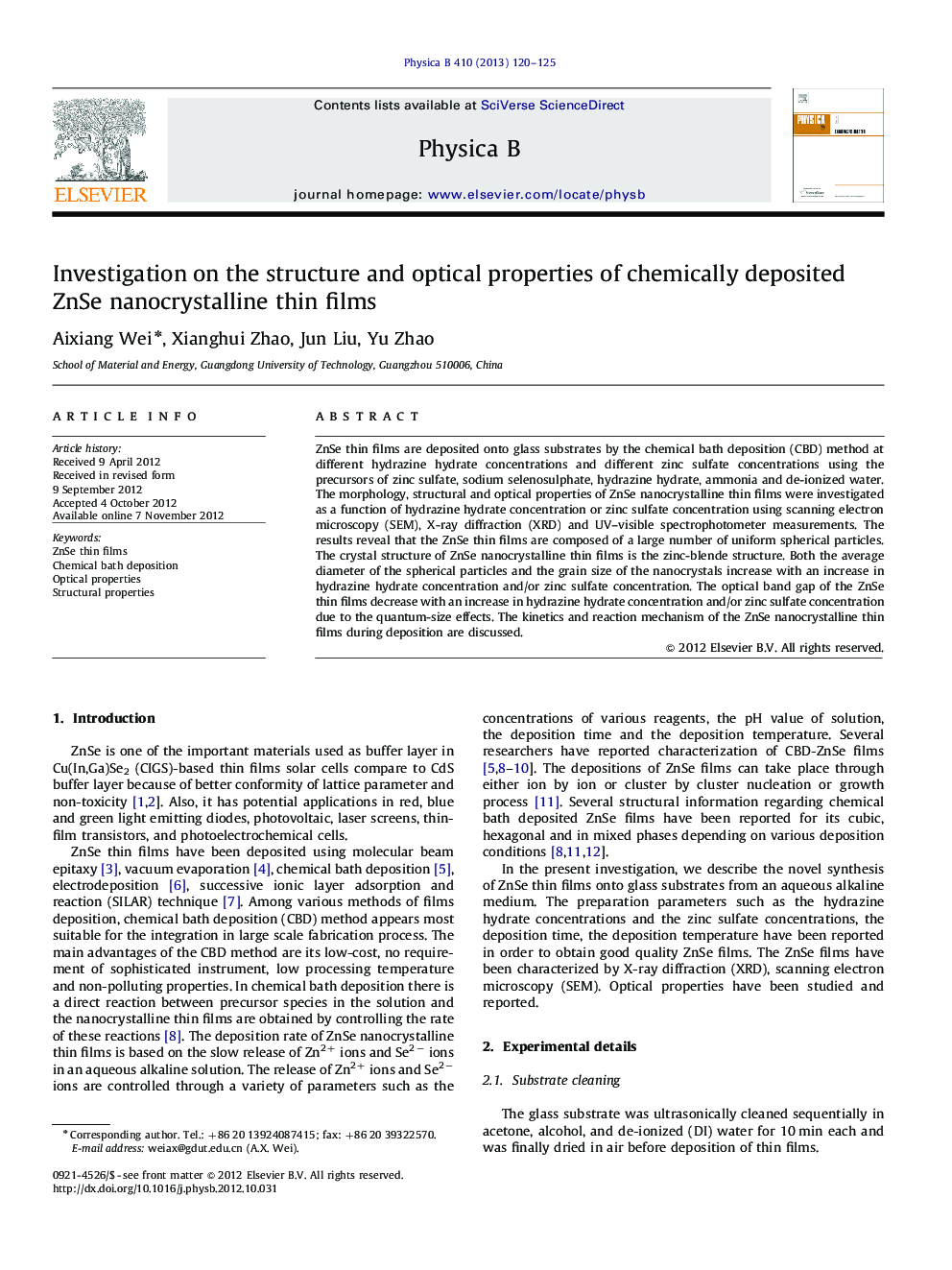| Article ID | Journal | Published Year | Pages | File Type |
|---|---|---|---|---|
| 1810229 | Physica B: Condensed Matter | 2013 | 6 Pages |
ZnSe thin films are deposited onto glass substrates by the chemical bath deposition (CBD) method at different hydrazine hydrate concentrations and different zinc sulfate concentrations using the precursors of zinc sulfate, sodium selenosulphate, hydrazine hydrate, ammonia and de-ionized water. The morphology, structural and optical properties of ZnSe nanocrystalline thin films were investigated as a function of hydrazine hydrate concentration or zinc sulfate concentration using scanning electron microscopy (SEM), X-ray diffraction (XRD) and UV–visible spectrophotometer measurements. The results reveal that the ZnSe thin films are composed of a large number of uniform spherical particles. The crystal structure of ZnSe nanocrystalline thin films is the zinc-blende structure. Both the average diameter of the spherical particles and the grain size of the nanocrystals increase with an increase in hydrazine hydrate concentration and/or zinc sulfate concentration. The optical band gap of the ZnSe thin films decrease with an increase in hydrazine hydrate concentration and/or zinc sulfate concentration due to the quantum-size effects. The kinetics and reaction mechanism of the ZnSe nanocrystalline thin films during deposition are discussed.
